Verdict
The Dell XPS 13 Plus (2023) is a simple spec bump upon the innovative first generation. As such, little has changed. The intriguing design combines with a great display, satisfying keyboard and comfortable haptic trackpad. But, it often gets quite warm and the performance doesn’t match up with similarly specced rivals. And, the battery life is just okay.
Pros
- Exciting modern design
- Top drawer keyboard and trackpad
- Bright and rich OLED display
- Thin and light
Cons
- Performance not competitive with rivals
- Underside gets warm
- Poor battery life
Buy the Dell XPS 13 Plus here
-
Futuristic designHaptic trackpad and function row stand out from the crowd -
Latest 13th Gen Intel Core CPUCore i5 and Core i7 P-series chips for high-end productivity -
Small and lightweight15mm thin and 1.26kg light
Introduction
In 2022, Dell decided to reimagine its excellent XPS 13 range. It was a tough task and, overall, it hasn’t gone well. This year, the new Dell XPS 13 Plus (2023) is a simple refresh rather than a course correction.
It’s not completely clear why Dell thought its XPS 13 devices needed a big shake-up. Of course, you can’t stand still, but it had the best Windows laptop accolade year after year with the previous incarnation of the XPS 13.
The switch-up saw the regular XPS 13 (2022) become even thinner and get a splash of colour, but the performance wasn’t up to it. Then, the futuristic XPS 13 Plus (2022) burst onto the scene, but had too many hang-ups to regain Dell’s crown. With the latest version, not much has changed.
Design and Keyboard
- Cutting-edge design
- Truly impressive keyboard
- Functional invisible trackpad
The Dell XPS 13 Plus looks great, there is absolutely no denying that. The outside of the laptop is unchanged from the silver aluminium stylings that the XPS 13 range has offered for many years but, on the inside, it looks like the future of laptops.
The gapless keyboard represents the only physical input on the bottom of the computer, with the invisible haptic trackpad and touch bar taking up the rest of the space. It is hard to fault the design of the XPS 13 Plus.
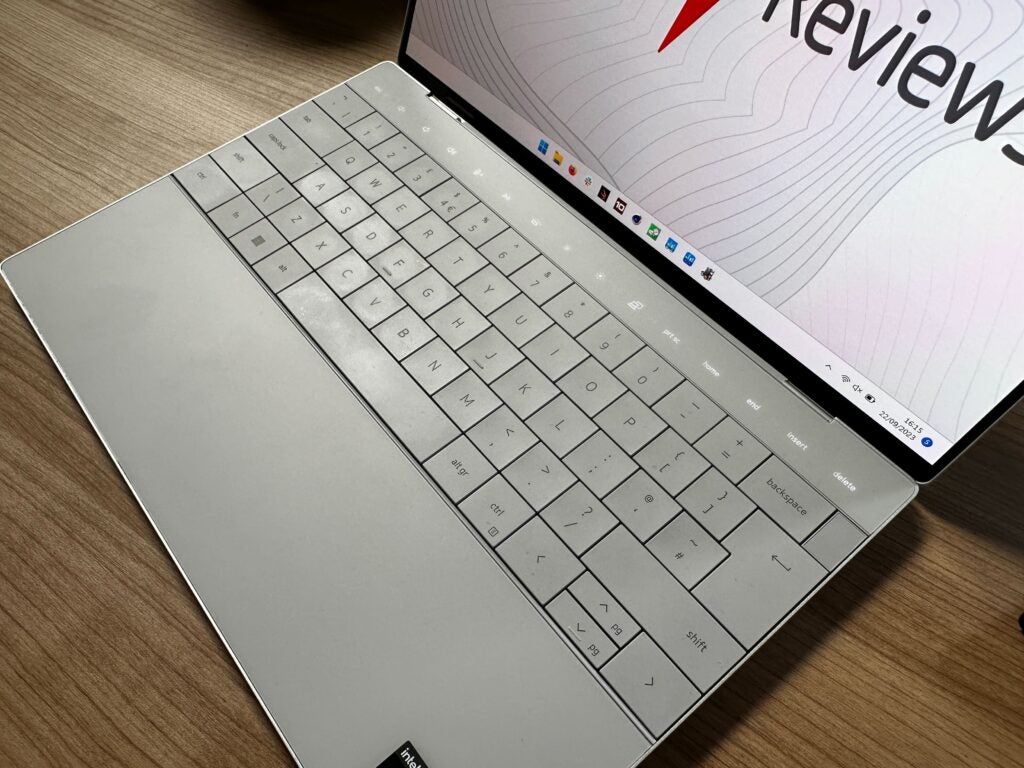
The touch bar has a neat trick of swapping between shortcut icons and function keys when pressing down on the Fn key, which looks really slick. However, there’s no haptic feedback on the touch bar, and so lacks a satisfying click.
There is also an issue with the backlighting of the keyboard. On my white review sample, the lighting often appears very uneven and hard to see, even in darker conditions, an issue that was also present in the previous model. The problem may be less prevalent on the darker colour option available, though.
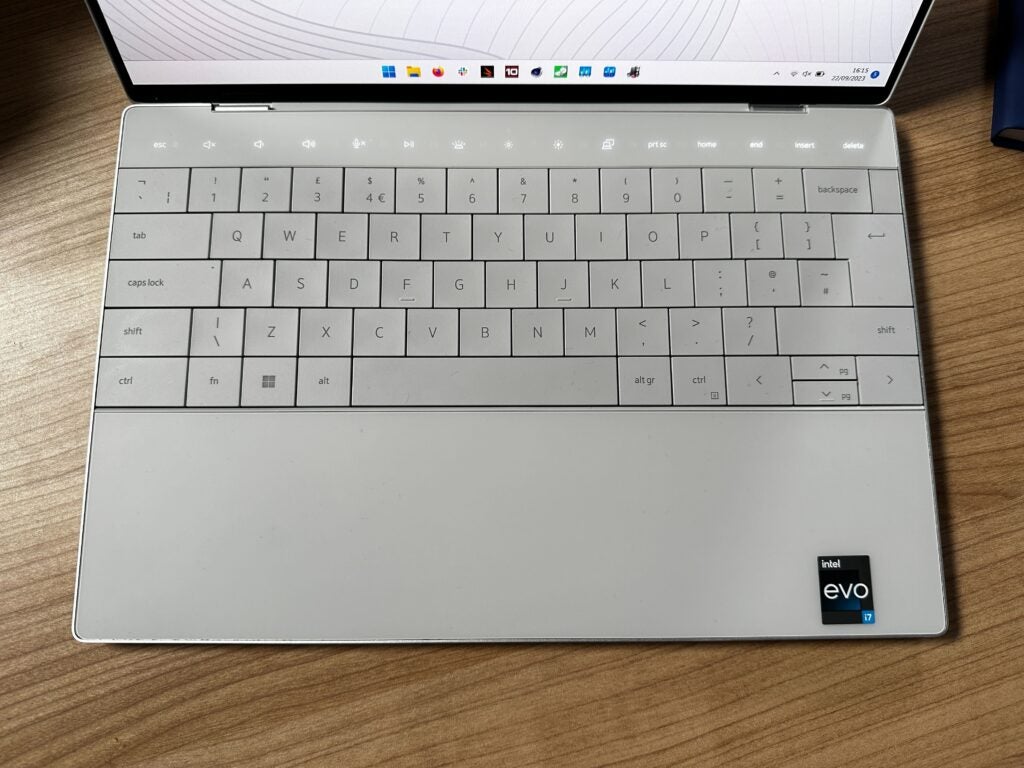
Everything else with the physical user interface is rosy. With such a slim and outlandish design, you may expect some sacrifice to be made with the quality of the keyboard but it’s a joy to use. In fact, the XPS 13 Plus absolutely offers the best typing experience of any thin and light laptop right now. It comes with a surprising amount of travel and a pleasing smidgen of crisp feedback.
You shouldn’t have any doubts about this unique trackpad either. Its invisibility is no issue, and unless you’re not a regular laptop user, you’ll naturally get used to where it is. It functions accurately and the haptics provide what feels like plenty of travel.
This Dell isn’t astoundingly thin and light in the same way the Asus Zenbook S 13 OLED (2023) is, but it has a delightfully small footprint nonetheless. It comes in at just 1.26kg and 15.3mm thin.
Closed, right view of the Dell XPS 13 Plus
Open, right view of the Dell XPS 13 Plus
Left side, open view of the Dell XPS 13 Plus
Left side, closed view of the Dell XPS 13 Plus
Unfortunately, the port selection is pretty abysmal, with one USB-C on either side of the device and that is your lot. It’s nice to have one of either side, allowing for flexible charging capabilities but you are going to be living the dongle life if you require anything more than a simple USB-C. Thankfully, they do offer Thunderbolt 4 support, helping to ease the low port selection pain if you have supported displays or accessories.
Dell touts the XPS 13 Plus sustainability chops in the form of a low-carbon aluminium chassis, with no mention of any form of recycled plastics used in the build of the machine though. The key achievement is in the packaging, which is completely made of card, making it fully recyclable and renewable.
Display and Sound
- Impressive 3.5K OLED display
- Rich sound that falters at higher volumes
Your experience with the Dell XPS 13 Plus (2023) display will differ greatly depending on which option you go with.
There are four options, including FHD+ non-touch, FHD+ touch, UHD+ touch and 3.5K OLED touch. My review model was the latter and, likely, the pick of the bunch – though the UHD+ model does still cost more to add.
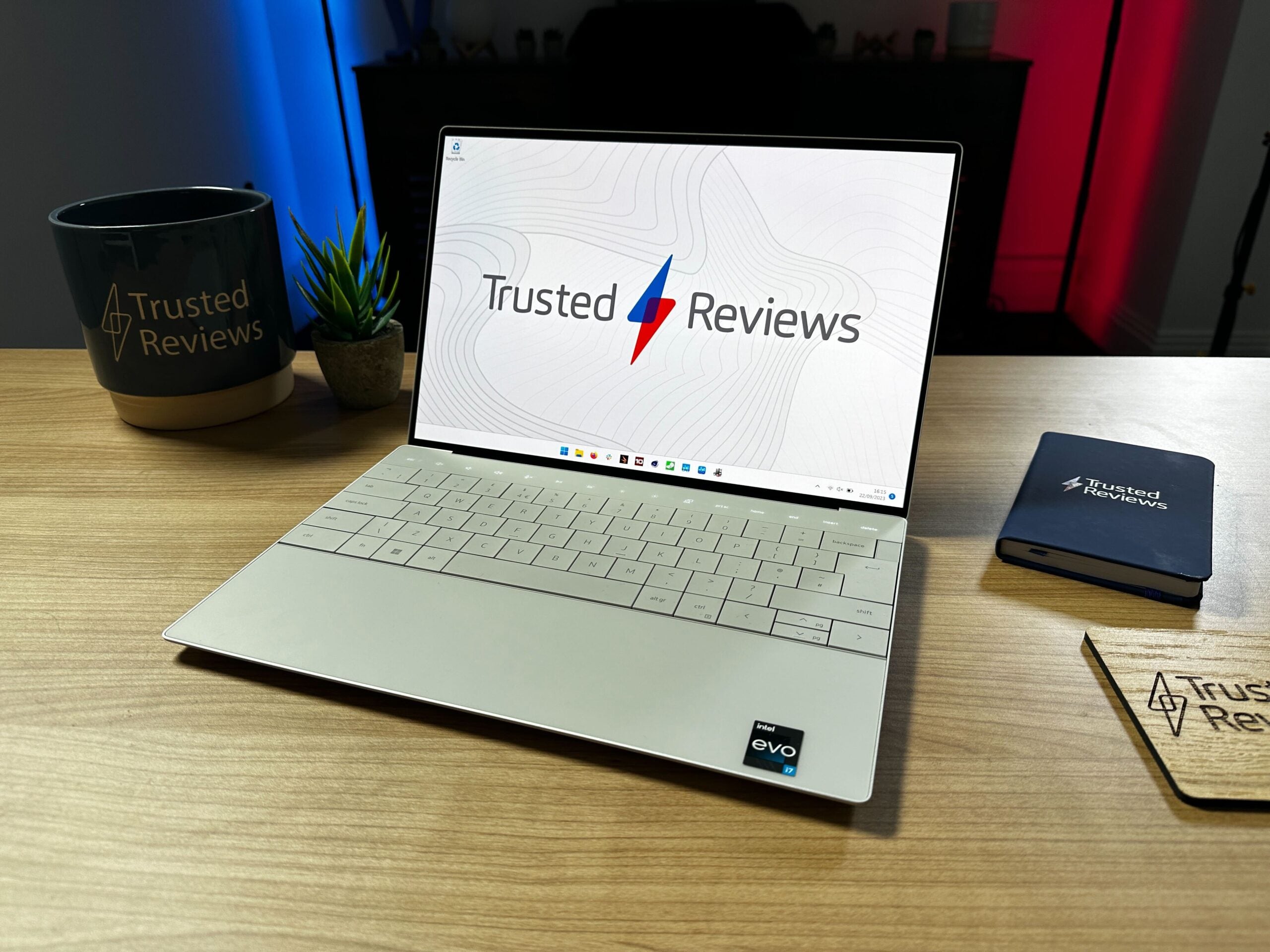
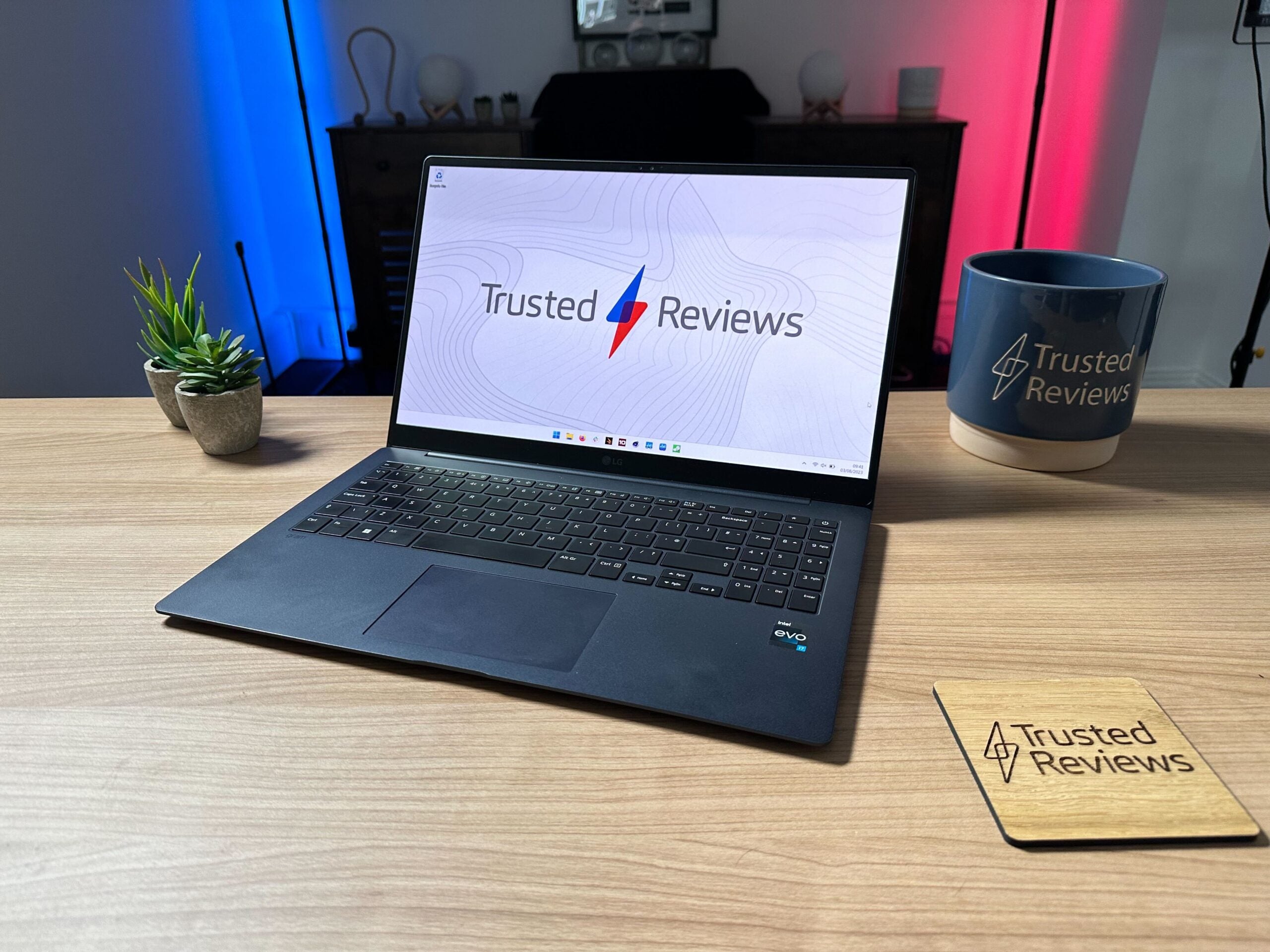
Despite its overall redesign hiccup, Dell’s displays haven’t faltered and the 3.5K OLED does not disappoint. In my benchmarking, it managed a decent peak brightness of 383.7 nits but primarily shone elsewhere. Being an OLED, the black level comes in at 0 and contrast ratio 0:1 while you get 6700K white visual colour temperature, 100% sRGB, 99% Adobe RGB and 100% DCI-P3.
These are top-notch scores that go above and beyond what you really need for productivity use, but you’ll be delighted with them nonetheless, and it’ll afford accurate representation of colour if you do dabble in image editing too. The 13.3-inch display may not be very cinematic, but movies and videos look great on the Dell too, with vivid colour and lush detail throughout.

I was surprised by the strong audio capabilities on offer from this dinky device too, and I really shouldn’t have been as the XPS range has long offered great speakers. These aren’t perfect though, with the sound stumbling when you turn the volume up high. But, for the most part, what you get is a pleasingly full sound that does let some slightly harsh highs sneak in though. There isn’t much true bass to speak of either, meaning it doesn’t touch the likes of the MacBook Air.
Disappointingly, the webcam is simply 720p rather than 1080p, meaning the detail isn’t great. And, it looks nothing more than fine when in anything but pristine lighting conditions. The results are rather warm too. It’s perfectly okay for your typical Zoom meetings but don’t expect top-notch visuals.
Performance
- 32GB RAM is overkill for a productivity laptop
- Doesn’t match up with key rivals
- Chassis can get a bit too warm
Performance is where the Dell XPS 13 Plus (2023) stumbles in terms of value for money. The £1570/$1849 review model I’ve been testing offers up an Intel Core i7-1360P CPU, 32GB RAM and 512GB SSD storage. It isn’t the most standard of configurations, especially with that 32GB RAM being overkill for a device largely focused on productivity. So do bear this in mind when considering my reporting on the performance of this device if you’re considering the likes of the 8GB RAM model, as it may differ significantly in terms of multitasking capabilities.
In my benchmarking of this laptop, it is clear this form factor doesn’t enable the full capabilities of the Core i7 inside, with the LG Gram SuperSlim, which sports the same chip, offering higher CPU-based test scores. In terms of our holistic PCMark 10 test, it also fell short of the LG while also losing out to the Samsung Galaxy Book 3 Pro and 360 models that I’ve reviewed. This is more surprising as those devices offer the less powerful Intel Core i5-1340P chip, and don’t offer the 32GB RAM that this machine does.
Nevertheless, it isn’t all about benchmarking and, as a productivity machine, the Dell XPS 13 Plus (2023) rarely floundered in my use. Intensive productivity never saw this laptop judder and the fans rarely got very loud. However, in the case of the latter, more cooling grunt may have been welcome as the bottom of the device would regularly get uncomfortably warm.
The onboard SSD is up to standard, especially given the premium price you are paying. It comes in at 6820MB/s read and 5079MB/s write. These aren’t leg-trembling speeds, but are up there with the majority of high-end ultrabooks on the market today. You’ll be able to swiftly transfer files through one of the Thunderbolt 4 ports with little time waiting around.
Software
- Not much bloatware on laptop
- 1-year premium support
Refreshingly, Dell doesn’t load this laptop with as many preloaded apps as some rivals, with just Dell Pair, Dell Command and Dell Digital Delivery onboard in terms of first-party programs.
These offer pairing with Dell accessories, updates to Dell drivers and software as well as the loading or reloading of included third-party apps respectively. The included third-party picks are McAfee Security, with which you get a 12-month LiveSafe subscription, as well as a 30-day Microsoft Office trial.
Dell offers 1-year premium support with all models, while its Limited Hardware Warranty varies depending on your region.
Battery Life
- Below-average battery life
- Speedy recharging
In a post M1 MacBook Air world, some Windows laptops have decided to step up to the plate in terms of battery life to try and keep pace with Apple’s impressive capabilities.
The LG Gram SuperSlim and the Samsung Galaxy Book 3 360 are key examples, with both hitting over 13 hours. The Dell XPS 13 Plus is, admittedly, smaller than those devices but it falls well short.
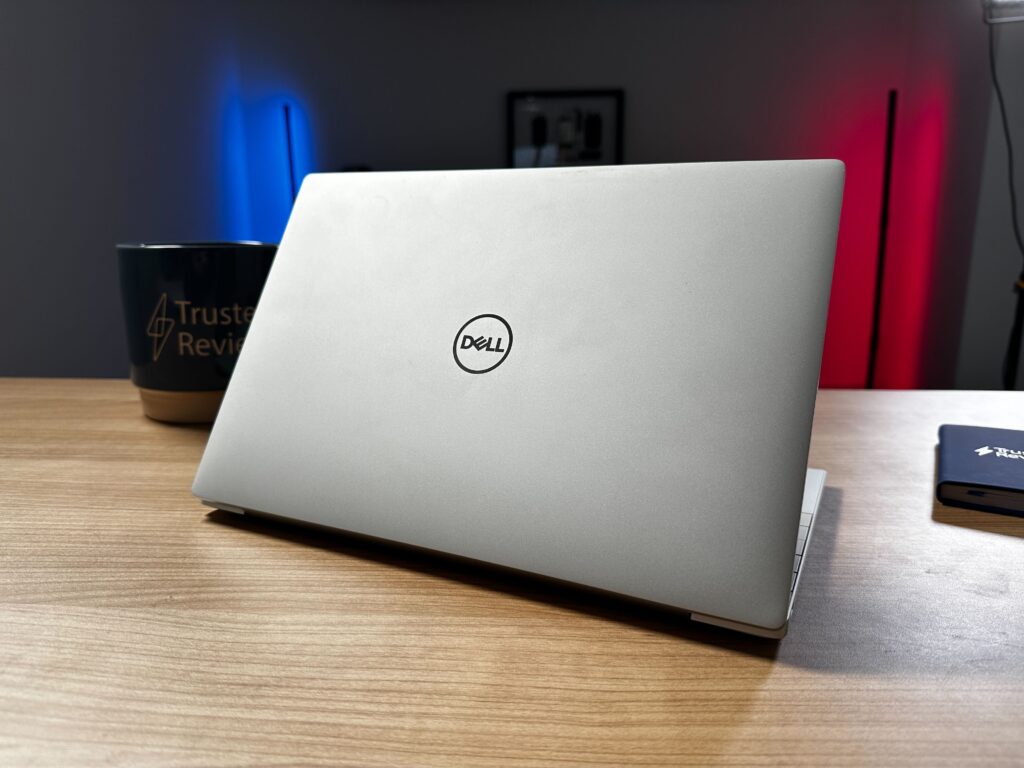
Our PCMark 10 battery life test came in at 7 hours and 46 minutes, which is a poor score for a modern high-end productivity machine. If it typically hit that score, it would be just about acceptable but, when pushed, I often saw this device manage under 4 hours, which just doesn’t cut it in 2023.
Thankfully, you’ll be able to swiftly charge the Dell back up, with a 60W charger that’ll get you to 100% in not much over an hour.
Latest deals
Should you buy it?
You want cutting-edge laptop design
The Dell XPS 13 Plus (2023) asks you to pay a premium for its futuristic looks. If you’re willing to make sacrifices for this, and desire an excellent laptop keyboard, it could be for you.
You want strong performance and long battery for your cash
The Dell XPS 13 Plus (2023) doesn’t get all the performance it can out of its components and often gets rather warm under load. The battery life is also far lower than some key rivals, including the MacBook Air M2.
Final Thoughts
The Dell XPS 13 Plus (2023) is a frustrating laptop in many ways. It should be applauded for standing out from the crowd while still getting some basics, like an excellent keyboard and trackpad experience, correct. The 3.5K OLED display is wondrous too.
But, the proof is in the pudding, and value-for-money performance is fundamental. The Dell XPS 13 Plus just doesn’t keep up. The LG Gram SuperSlim and Samsung Galaxy Book 3 360 both outstrip this device in terms of speed, despite the latter offering a lower-powered chip. Battery life is extremely disappointing too, falling well foul of high-end modern standards.
The Dell XPS rethink needs a rethink if it’s going to contend with excellent devices like the MacBook Air M2 once again. Check out our Best Laptop guide for even more options.
How we test
Every laptop we review goes through a series of uniform checks designed to gauge key things including build quality, performance, screen quality and battery life.
These include formal synthetic benchmarks and scripted tests, plus a series of real world checks.
We used as our main laptop for at least a week.
Tested the performance via both benchmark tests and real-world use.
We tested the screen with a colorimeter and real-world use.
We tested the battery with a benchmark test and real-world use.
FAQs
The Dell XPS 13 Plus was introduced in 2022 as a new take on the typical XPS 13 formula. It offers a futuristic redesign in terms of looks and user interaction. The regular XPS 13 became a lower-powered yet more colourful option instead.
The current M2 MacBook Air is comfortably one of the best laptops around while the Dell XPS 13 Plus falls short in performance and battery life. The Dell XPS 13 Plus does offer what might be the best laptop keyboard on the market though.
Trusted Reviews test data
PCMark 10
Cinebench R23 multi core
Cinebench R23 single core
Geekbench 5 single core
Geekbench 5 multi core
Geekbench 6 single core
Geekbench 6 multi core
3DMark Time Spy
CrystalDiskMark Read speed
CrystalDiskMark Write Speed
Brightness (SDR)
Black level
Contrast ratio
White Visual Colour Temperature
sRGB
Adobe RGB
DCI-P3
PCMark Battery (office)
Battery Life
UK RRP
USA RRP
CPU
Manufacturer
Quiet Mark Accredited
Screen Size
Storage Capacity
Front Camera
Battery
Battery Hours
Size (Dimensions)
Weight
Operating System
Release Date
First Reviewed Date
Resolution
HDR
Refresh Rate
Ports
Audio (Power output)
GPU
RAM
Connectivity
Colours
Display Technology
Screen Technology
Touch Screen
Convertible?
Verdict
The Dell XPS 13 Plus (2023) is a simple spec bump upon the innovative first generation. As such, little has changed. The intriguing design combines with a great display, satisfying keyboard and comfortable haptic trackpad. But, it often gets quite warm and the performance doesn’t match up with similarly specced rivals. And, the battery life is just okay.
Pros
- Exciting modern design
- Top drawer keyboard and trackpad
- Bright and rich OLED display
- Thin and light
Cons
- Performance not competitive with rivals
- Underside gets warm
- Poor battery life
Buy the Dell XPS 13 Plus here
-
Futuristic designHaptic trackpad and function row stand out from the crowd -
Latest 13th Gen Intel Core CPUCore i5 and Core i7 P-series chips for high-end productivity -
Small and lightweight15mm thin and 1.26kg light
Introduction
In 2022, Dell decided to reimagine its excellent XPS 13 range. It was a tough task and, overall, it hasn’t gone well. This year, the new Dell XPS 13 Plus (2023) is a simple refresh rather than a course correction.
It’s not completely clear why Dell thought its XPS 13 devices needed a big shake-up. Of course, you can’t stand still, but it had the best Windows laptop accolade year after year with the previous incarnation of the XPS 13.
The switch-up saw the regular XPS 13 (2022) become even thinner and get a splash of colour, but the performance wasn’t up to it. Then, the futuristic XPS 13 Plus (2022) burst onto the scene, but had too many hang-ups to regain Dell’s crown. With the latest version, not much has changed.
Design and Keyboard
- Cutting-edge design
- Truly impressive keyboard
- Functional invisible trackpad
The Dell XPS 13 Plus looks great, there is absolutely no denying that. The outside of the laptop is unchanged from the silver aluminium stylings that the XPS 13 range has offered for many years but, on the inside, it looks like the future of laptops.
The gapless keyboard represents the only physical input on the bottom of the computer, with the invisible haptic trackpad and touch bar taking up the rest of the space. It is hard to fault the design of the XPS 13 Plus.

The touch bar has a neat trick of swapping between shortcut icons and function keys when pressing down on the Fn key, which looks really slick. However, there’s no haptic feedback on the touch bar, and so lacks a satisfying click.
There is also an issue with the backlighting of the keyboard. On my white review sample, the lighting often appears very uneven and hard to see, even in darker conditions, an issue that was also present in the previous model. The problem may be less prevalent on the darker colour option available, though.

Everything else with the physical user interface is rosy. With such a slim and outlandish design, you may expect some sacrifice to be made with the quality of the keyboard but it’s a joy to use. In fact, the XPS 13 Plus absolutely offers the best typing experience of any thin and light laptop right now. It comes with a surprising amount of travel and a pleasing smidgen of crisp feedback.
You shouldn’t have any doubts about this unique trackpad either. Its invisibility is no issue, and unless you’re not a regular laptop user, you’ll naturally get used to where it is. It functions accurately and the haptics provide what feels like plenty of travel.
This Dell isn’t astoundingly thin and light in the same way the Asus Zenbook S 13 OLED (2023) is, but it has a delightfully small footprint nonetheless. It comes in at just 1.26kg and 15.3mm thin.
Closed, right view of the Dell XPS 13 Plus
Open, right view of the Dell XPS 13 Plus
Left side, open view of the Dell XPS 13 Plus
Left side, closed view of the Dell XPS 13 Plus
Unfortunately, the port selection is pretty abysmal, with one USB-C on either side of the device and that is your lot. It’s nice to have one of either side, allowing for flexible charging capabilities but you are going to be living the dongle life if you require anything more than a simple USB-C. Thankfully, they do offer Thunderbolt 4 support, helping to ease the low port selection pain if you have supported displays or accessories.
Dell touts the XPS 13 Plus sustainability chops in the form of a low-carbon aluminium chassis, with no mention of any form of recycled plastics used in the build of the machine though. The key achievement is in the packaging, which is completely made of card, making it fully recyclable and renewable.
Display and Sound
- Impressive 3.5K OLED display
- Rich sound that falters at higher volumes
Your experience with the Dell XPS 13 Plus (2023) display will differ greatly depending on which option you go with.
There are four options, including FHD+ non-touch, FHD+ touch, UHD+ touch and 3.5K OLED touch. My review model was the latter and, likely, the pick of the bunch – though the UHD+ model does still cost more to add.


Despite its overall redesign hiccup, Dell’s displays haven’t faltered and the 3.5K OLED does not disappoint. In my benchmarking, it managed a decent peak brightness of 383.7 nits but primarily shone elsewhere. Being an OLED, the black level comes in at 0 and contrast ratio 0:1 while you get 6700K white visual colour temperature, 100% sRGB, 99% Adobe RGB and 100% DCI-P3.
These are top-notch scores that go above and beyond what you really need for productivity use, but you’ll be delighted with them nonetheless, and it’ll afford accurate representation of colour if you do dabble in image editing too. The 13.3-inch display may not be very cinematic, but movies and videos look great on the Dell too, with vivid colour and lush detail throughout.

I was surprised by the strong audio capabilities on offer from this dinky device too, and I really shouldn’t have been as the XPS range has long offered great speakers. These aren’t perfect though, with the sound stumbling when you turn the volume up high. But, for the most part, what you get is a pleasingly full sound that does let some slightly harsh highs sneak in though. There isn’t much true bass to speak of either, meaning it doesn’t touch the likes of the MacBook Air.
Disappointingly, the webcam is simply 720p rather than 1080p, meaning the detail isn’t great. And, it looks nothing more than fine when in anything but pristine lighting conditions. The results are rather warm too. It’s perfectly okay for your typical Zoom meetings but don’t expect top-notch visuals.
Performance
- 32GB RAM is overkill for a productivity laptop
- Doesn’t match up with key rivals
- Chassis can get a bit too warm
Performance is where the Dell XPS 13 Plus (2023) stumbles in terms of value for money. The £1570/$1849 review model I’ve been testing offers up an Intel Core i7-1360P CPU, 32GB RAM and 512GB SSD storage. It isn’t the most standard of configurations, especially with that 32GB RAM being overkill for a device largely focused on productivity. So do bear this in mind when considering my reporting on the performance of this device if you’re considering the likes of the 8GB RAM model, as it may differ significantly in terms of multitasking capabilities.
In my benchmarking of this laptop, it is clear this form factor doesn’t enable the full capabilities of the Core i7 inside, with the LG Gram SuperSlim, which sports the same chip, offering higher CPU-based test scores. In terms of our holistic PCMark 10 test, it also fell short of the LG while also losing out to the Samsung Galaxy Book 3 Pro and 360 models that I’ve reviewed. This is more surprising as those devices offer the less powerful Intel Core i5-1340P chip, and don’t offer the 32GB RAM that this machine does.
Nevertheless, it isn’t all about benchmarking and, as a productivity machine, the Dell XPS 13 Plus (2023) rarely floundered in my use. Intensive productivity never saw this laptop judder and the fans rarely got very loud. However, in the case of the latter, more cooling grunt may have been welcome as the bottom of the device would regularly get uncomfortably warm.
The onboard SSD is up to standard, especially given the premium price you are paying. It comes in at 6820MB/s read and 5079MB/s write. These aren’t leg-trembling speeds, but are up there with the majority of high-end ultrabooks on the market today. You’ll be able to swiftly transfer files through one of the Thunderbolt 4 ports with little time waiting around.
Software
- Not much bloatware on laptop
- 1-year premium support
Refreshingly, Dell doesn’t load this laptop with as many preloaded apps as some rivals, with just Dell Pair, Dell Command and Dell Digital Delivery onboard in terms of first-party programs.
These offer pairing with Dell accessories, updates to Dell drivers and software as well as the loading or reloading of included third-party apps respectively. The included third-party picks are McAfee Security, with which you get a 12-month LiveSafe subscription, as well as a 30-day Microsoft Office trial.
Dell offers 1-year premium support with all models, while its Limited Hardware Warranty varies depending on your region.
Battery Life
- Below-average battery life
- Speedy recharging
In a post M1 MacBook Air world, some Windows laptops have decided to step up to the plate in terms of battery life to try and keep pace with Apple’s impressive capabilities.
The LG Gram SuperSlim and the Samsung Galaxy Book 3 360 are key examples, with both hitting over 13 hours. The Dell XPS 13 Plus is, admittedly, smaller than those devices but it falls well short.

Our PCMark 10 battery life test came in at 7 hours and 46 minutes, which is a poor score for a modern high-end productivity machine. If it typically hit that score, it would be just about acceptable but, when pushed, I often saw this device manage under 4 hours, which just doesn’t cut it in 2023.
Thankfully, you’ll be able to swiftly charge the Dell back up, with a 60W charger that’ll get you to 100% in not much over an hour.
Latest deals
Should you buy it?
You want cutting-edge laptop design
The Dell XPS 13 Plus (2023) asks you to pay a premium for its futuristic looks. If you’re willing to make sacrifices for this, and desire an excellent laptop keyboard, it could be for you.
You want strong performance and long battery for your cash
The Dell XPS 13 Plus (2023) doesn’t get all the performance it can out of its components and often gets rather warm under load. The battery life is also far lower than some key rivals, including the MacBook Air M2.
Final Thoughts
The Dell XPS 13 Plus (2023) is a frustrating laptop in many ways. It should be applauded for standing out from the crowd while still getting some basics, like an excellent keyboard and trackpad experience, correct. The 3.5K OLED display is wondrous too.
But, the proof is in the pudding, and value-for-money performance is fundamental. The Dell XPS 13 Plus just doesn’t keep up. The LG Gram SuperSlim and Samsung Galaxy Book 3 360 both outstrip this device in terms of speed, despite the latter offering a lower-powered chip. Battery life is extremely disappointing too, falling well foul of high-end modern standards.
The Dell XPS rethink needs a rethink if it’s going to contend with excellent devices like the MacBook Air M2 once again. Check out our Best Laptop guide for even more options.
How we test
Every laptop we review goes through a series of uniform checks designed to gauge key things including build quality, performance, screen quality and battery life.
These include formal synthetic benchmarks and scripted tests, plus a series of real world checks.
We used as our main laptop for at least a week.
Tested the performance via both benchmark tests and real-world use.
We tested the screen with a colorimeter and real-world use.
We tested the battery with a benchmark test and real-world use.
FAQs
The Dell XPS 13 Plus was introduced in 2022 as a new take on the typical XPS 13 formula. It offers a futuristic redesign in terms of looks and user interaction. The regular XPS 13 became a lower-powered yet more colourful option instead.
The current M2 MacBook Air is comfortably one of the best laptops around while the Dell XPS 13 Plus falls short in performance and battery life. The Dell XPS 13 Plus does offer what might be the best laptop keyboard on the market though.
Trusted Reviews test data
PCMark 10
Cinebench R23 multi core
Cinebench R23 single core
Geekbench 5 single core
Geekbench 5 multi core
Geekbench 6 single core
Geekbench 6 multi core
3DMark Time Spy
CrystalDiskMark Read speed
CrystalDiskMark Write Speed
Brightness (SDR)
Black level
Contrast ratio
White Visual Colour Temperature
sRGB
Adobe RGB
DCI-P3
PCMark Battery (office)
Battery Life
UK RRP
USA RRP
CPU
Manufacturer
Quiet Mark Accredited
Screen Size
Storage Capacity
Front Camera
Battery
Battery Hours
Size (Dimensions)
Weight
Operating System
Release Date
First Reviewed Date
Resolution
HDR
Refresh Rate
Ports
Audio (Power output)
GPU
RAM
Connectivity
Colours
Display Technology
Screen Technology
Touch Screen
Convertible?























